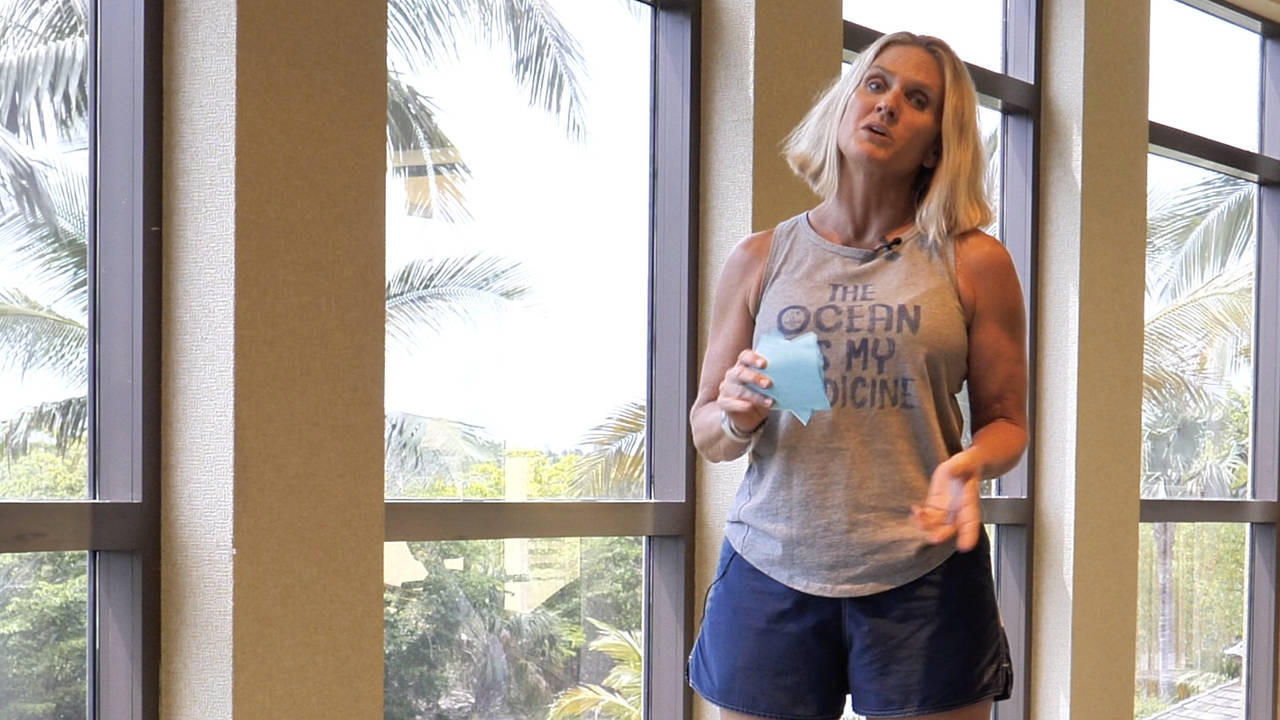Don't Get Twisted Out of Sorts by an Ankle Sprain

Angie in the Fitness Center - helping, teaching and sharing best practices.
Ankle sprains account for approximately 40% of all athletic injuries and are the most common injury in sports.
Ankle sprains are most likely to occur during activities that involve running, jumping or quick directional changes.
The key to avoid ankle sprains and staying off the injured reserve list is exercise management to improve both muscular strength and muscle proprioception.
Most ankle sprains fall into one of two categories: acute and chronic.
Acute injuries make up roughly 85% of all ankle sprains and occur when the foot is inverted and planter-flexed. This means while your toes are pointed and the ankle rolls away from the body. This could occur to the basketball player landing off a jump with poor proprioception or to a runner cutting the tangent to make a light (who me?) with weak muscular strength in the ankle.
The remaining 15% of sprains are commonly classified as chronic ankle instability or CAI. CAI’s are defined as a recurrent ‘giving away’ of the ankle during weight-bearing activities.
Specific care should be taken with your health care provider to fully heal before returning to activity following an ankle sprain. However, once you have been cleared for sport, there are measures you can take to improve your muscular strength and proprioception and decrease the likelihood of a recurrence.
Proprioception and Strengthening Exercises
To reduce the risk on re-injuring the ankle, it is essential that all exercises are performed slowly in a controlled environment. Further requirements include maintaining steady balance as well as activation of the core muscles, pelvic stabilizers and gluteus muscles.
Hold all exercises for 10-30 seconds.
Double leg stand or squat with a pillow. Stand or squat with both feet on a pillow.
Single leg stand with pillow. Stand on a pillow one leg at a time.
Single leg stand with a knee bend on pillow. Same as the single leg stand but perform a small range, single knee bend in a slow and controlled manner.
Wobbleboard or Bosu ball with eyes open. A wobbleboard or Bosu ball provide an unstable ground, moving ankles in multi-directional planes. Once you’re able to stand with both feet, progress to standing on one leg at a time. Next, add a small squat with one leg. Finally, add small head turns right and left while standing on one leg.
Once you have completed the above exercises, repeat on the wobbleboard or Bosu but with your eyes closed. Closing your eyes removes an opportunity for visual feedback and places more emphasis on joint receptors.
Add jumps, hops and zig-zag hops. These are activities that replicate the stress athletes experience during sport.
Finally, don’t forget the strength specific work. Moving an ankle through it’s full range of motion against a fixed resistance band can provided valuable strength improvement further offsetting the the likelihood of a recurring sprain.
I invite you to explore our new site and visit frequently as we will be continually updating and adding new content.
I also invite you to join our Geared Up family through our new Monthly Membership program which completely helps & supports you toward living your best life.
Our Geared Up v2.0 theme for you is "Health, Wellness & Fitness in a Multi-Sport Lifestyle". Find out all of the ways we can support you through our Membership program here.
Let's go on this journey together and change your life as always, “Practice with Purpose and Live with Passion!”
Angie

